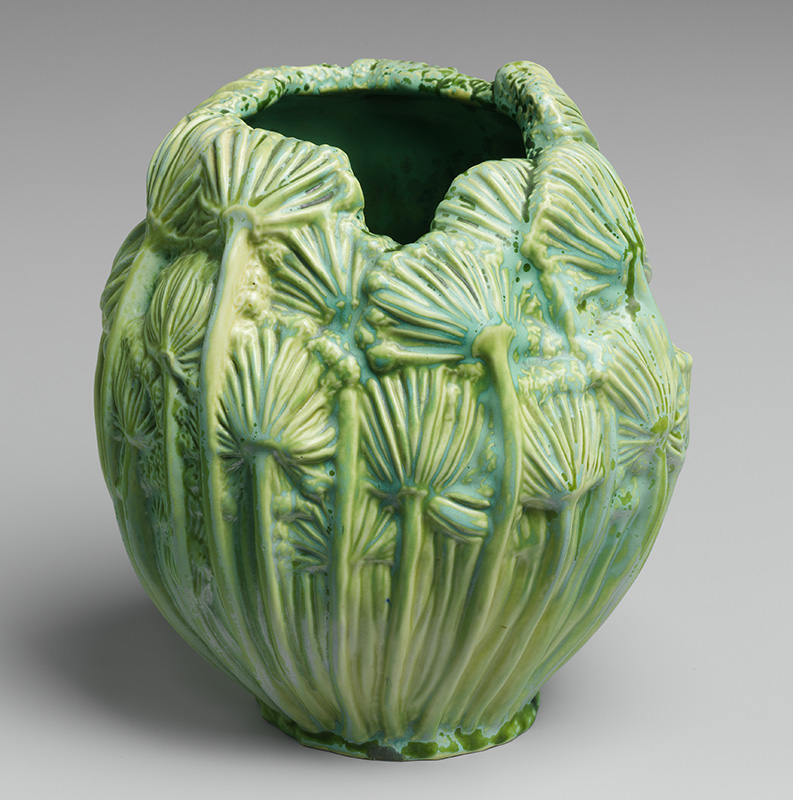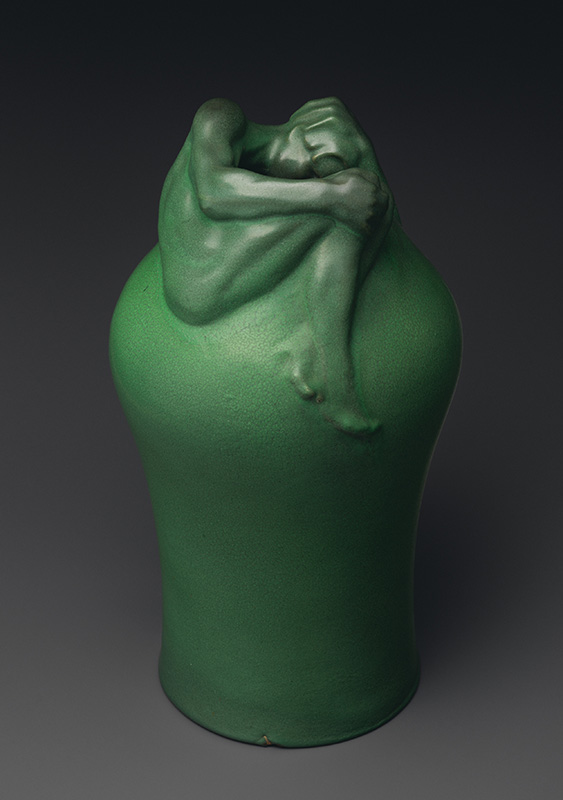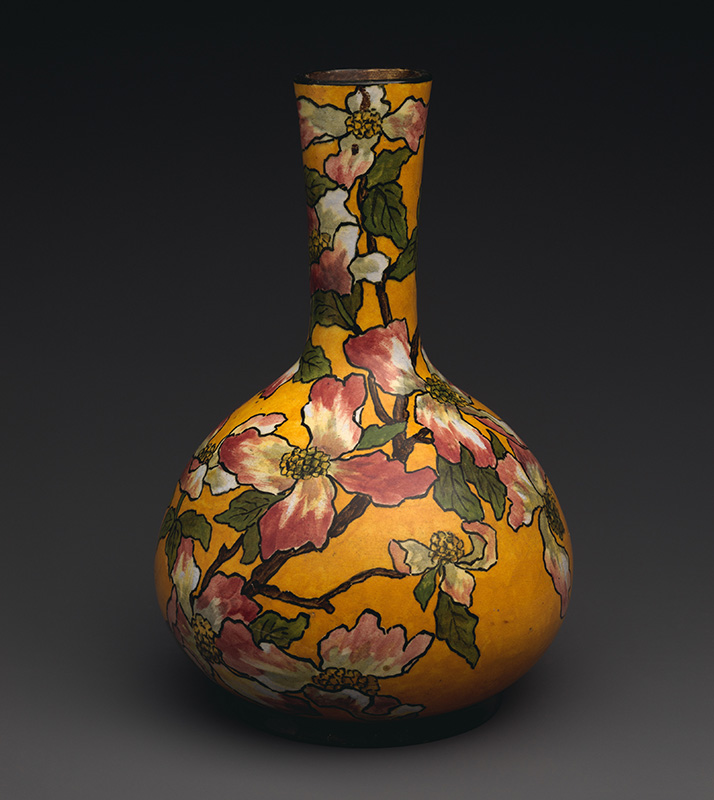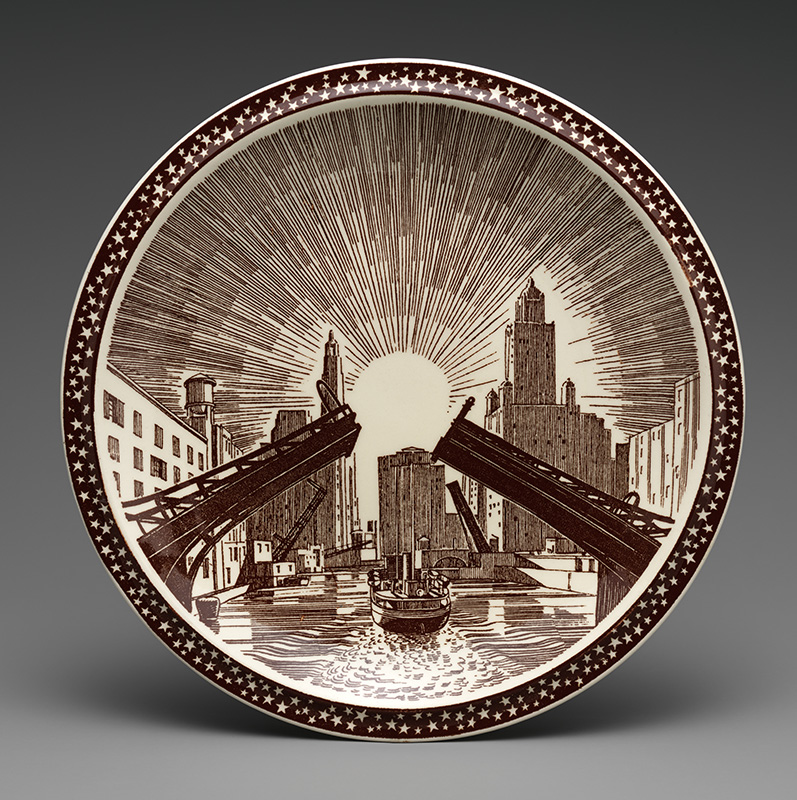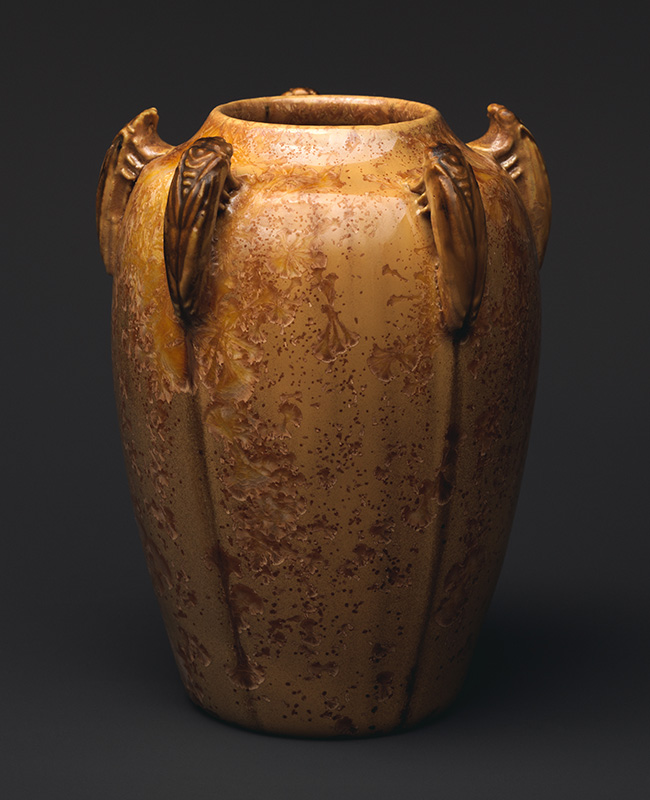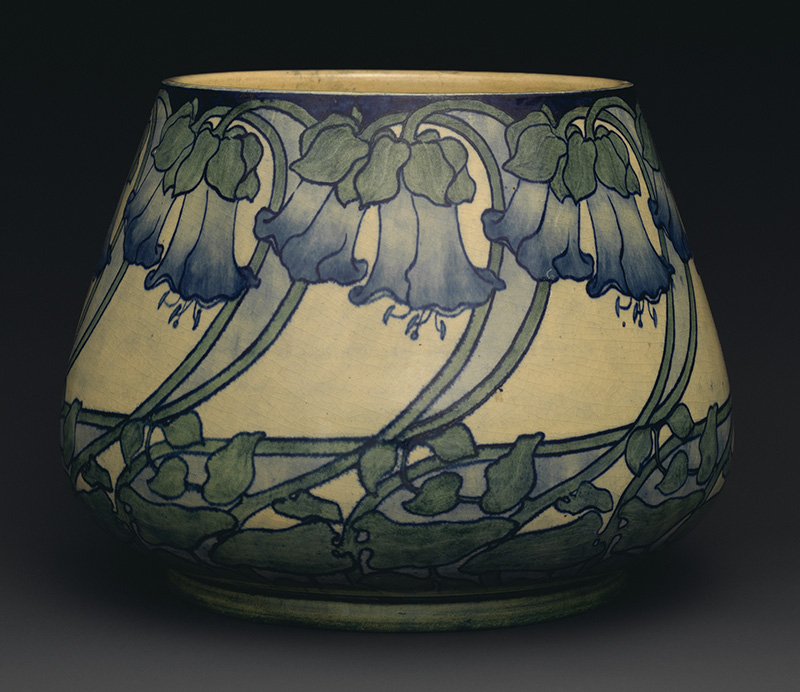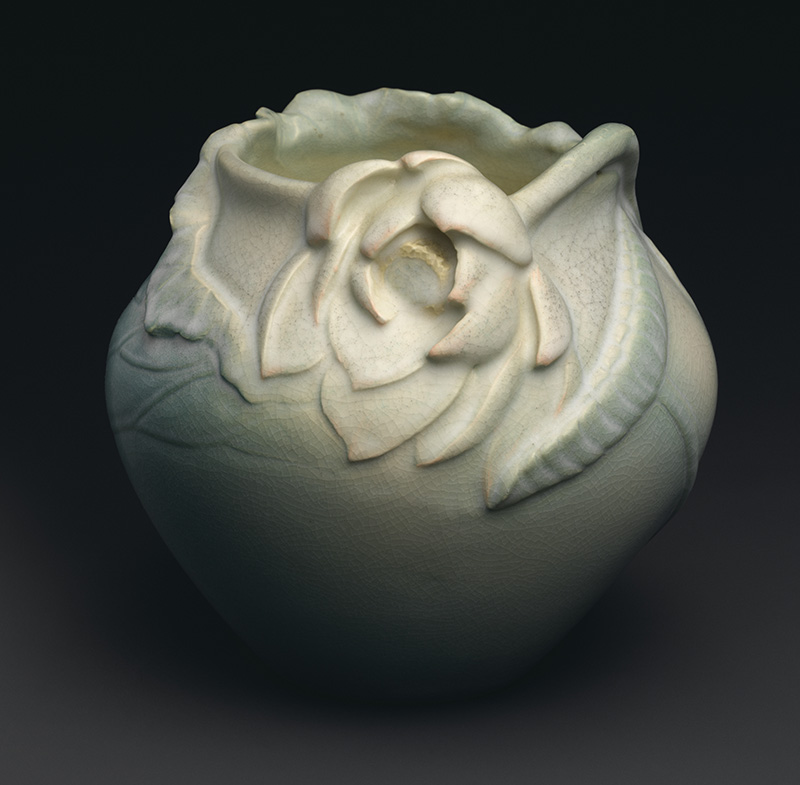Delicately Carved, Seductively Glazed: Gifts from the Fire Opens at The Metropolitan Museum of Art
by Juliana Fagua Arias
I met renowned scholar and collector Martin Eidelberg a few weeks before the opening of Gifts from the Fire: American Ceramics from the Collection of Martin Eidelberg, an exhibition featuring over 150 works from his recent gift to The Metropolitan Museum of Art. As I shadowed him and the exhibition’s curator, Nonnie Frelinghuysen, throughout the galleries that would display his collection for the next year, what stood out the most to me was his sense of humor. As we said goodbye and shook hands, he said, “When I see you on the day of the opening, remind me who you are.” With a bit of a bruised ego, I smiled and nodded, as he followed up with, “Also, remind me of who I am.” His humility and playfulness reminded me that besides being a collector, Eidelberg is mainly an educator and scholar with an interest in understanding and meticulously analyzing the art pottery movement of the late 19th and early 20th centuries.
This acute aesthetic sensibility is reflected in Gifts from the Fire, which highlights the extraordinary diversity and impressive accomplishments of American potteries and ceramicists working from the late 19th century to World War II. Innovations in styles, materials, and techniques characterize the era of American ceramics that followed the Centennial Exhibition of 1876 in Philadelphia, where the most recent advancements in European and Asian art pottery were displayed. Adelaide Alsop Robineau’s exquisitely carved porcelains and crystalline glazes, Tiffany’s vessels inspired by nature (figure 1), George Ohr’s collapsed shapes and blistered glazes, and Van Briggle’s Symbolist-inspired work (figure 2) are all on view and part of the cacophony that demonstrated the United States’s artistic originality. Eidelberg’s collection joins three major gifts of ceramics by the late Robert A. Ellison Jr.—his friend, colleague, and sometimes collecting rival—establishing The Met as a leading institution in the exhibition, interpretation, and study of art pottery.
A reflection of Eidelberg’s aesthetic values, Gifts from the Fire presents a vast array of rich and seductive glazes, sculpted decoration, and delicately carved work. The modest size of the jewel-like artworks invites the viewer to look closely, absorbing every last detail. Organized in a somewhat chronological order, each case in the exhibition either focuses on an individual manufactory or artist, or groups art potters with similar aesthetics. In an almost encyclopedic manner, each case examines the characteristic shapes and techniques of the artists, identifying, when possible, decorator, designer, and manufacturer. The exhibition starts with English ceramist John Bennett (figure 3), who worked in New York in the late 1870s and early 1880s and whose style followed English reform and Arts & Crafts ideals. Marrying art and industry, the exhibition ends with Modernist painter Rockwell Kent (figure 4) and his designs for patriotic dinnerware in the early 1940s. Along the way, the visitor will admire the opaque matte glazes of Grueby pottery, the flattened designs based on natural forms of Newcomb pottery, the calligraphic and lyrical work of Maija Grotell, and the elongated and whimsical animal bodies of Wilhelm Hunt Diederich.
The prominence of women in art pottery is one of the main themes of the exhibition. The exhibition highlights pioneering artists such as Adelaide Alsop Robineau (figure 5) and M. Louise McLaughlin, both of whom started as china painters but then experimented with porcelain and new techniques such as barbotine decoration. The exhibition also showcases the work of women potters at Newcomb (figure 6), Marblehead, and Tiffany Studios. The Danish-born ceramist Edith Lautrup, for example, headed Tiffany’s pottery division and introduced Scandinavian designs to the firm. Marblehead pottery, on the other hand, started out as part of a therapeutic program for women allegedly suffering from nervous disorders.
Another recurrent theme throughout the exhibition is the importance of transnational connections for the development of American art pottery. Multiple potters and decorators featured in the exhibition immigrated from Europe and Asia to the United States, bringing with them innovative techniques and experimental approaches to ceramics. Notably, Japanese artist Kataro Shirayamadani (figure 7) created a dynamic and highly sculptural repertoire of work for Rookwood pottery. European art movements, especially those developed in England and France, such as Art Nouveau, Symbolism, the School of Paris, and Art Deco, were uniquely influential in American art pottery, in part because many American artists studied in Paris. World’s fairs, particularly the Philadelphia Centennial exhibition of 1876 and the Paris Exposition Universelle of 1900, were key exchange venues between East and West where artists drew inspiration from the myriad displays and motifs, techniques, and shapes. Make sure to visit this stunning display on view through October 16, 2022, a fantastic homage to Martin Eidelberg and to America’s gifts from the fire.
Juliana Fagua Arias is a contributing writer for the Decorative Arts Trust and is the Tiffany & Co. Foundation Curatorial Intern in American Decorative Arts at The Met.
A print version of this article was published in The Magazine of the Decorative Arts Trust, one of our most popular member benefits. Join today!

